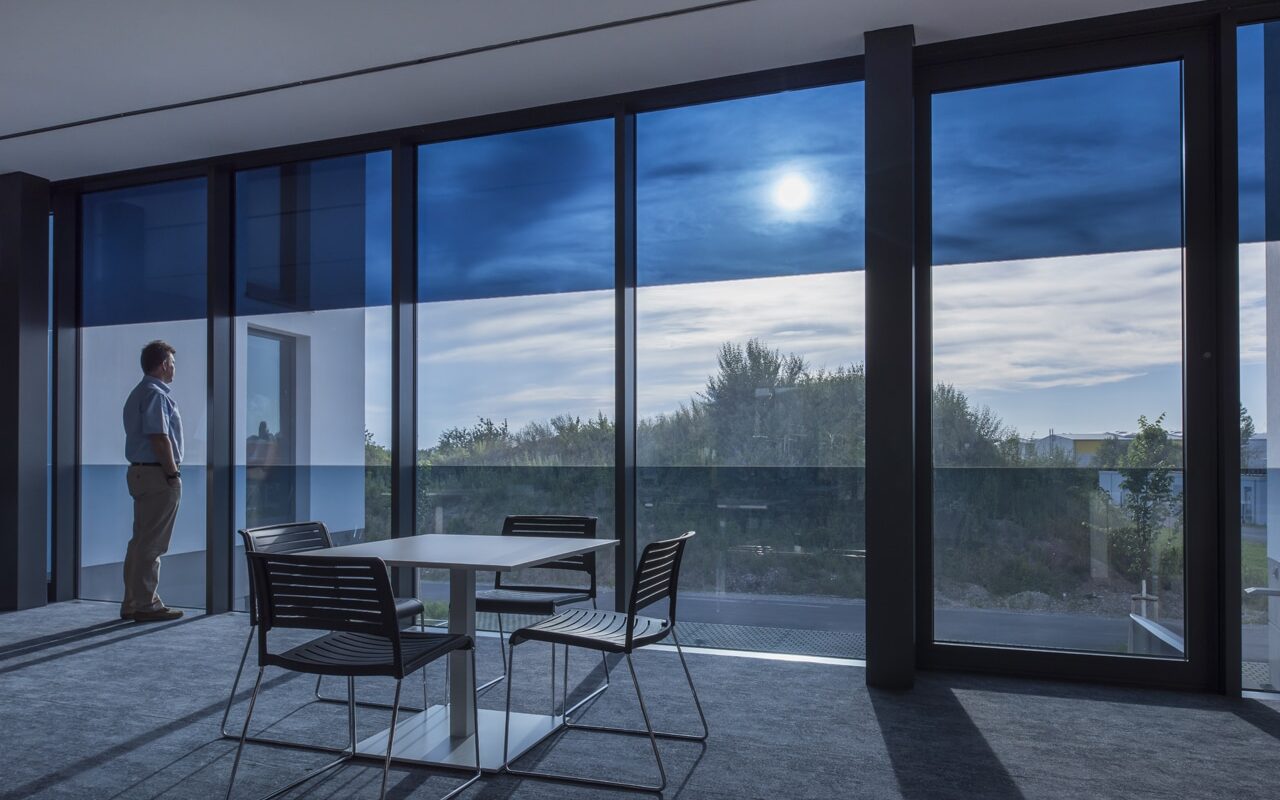Electrochromic glass is a smart glass technology that is able to change its properties when an electric charge is applied. Once considered a novelty, electrochromic glass is now increasingly being adopted in buildings and automotive applications due to its versatile functionality and energy saving potential. In this article, we explore the working of electrochromic glass, its usage in various sectors, and the promising future of this innovative material.
What is Electrochromic Glass?
Electrochromic glass is a type of smart glass that can reversibly change its light transmission properties when small voltages are applied. It contains an electrochromic material, such as tungsten oxide, placed between two conductive layers of glass or plastic. When a small electric current passes through, electrons are either inserted into or removed from the electrochromic layer, causing it to change color. This allows the glass to transition between clear and tinted states, adjusting the amount of light, solar heat and glare passing through.
The color change is uniform across the entire glass surface and the process is fully reversible – turning the voltage off returns the glass to its original clear state. The color modification is also instantaneous, taking just seconds to switch. This makes electrochromic glass an electronically controlled variable tint material with multiple applications leveraging its on-demand optical switching capabilities.
Usage in Buildings
One of the major uses of Electrochromic Glass is in commercial and residential buildings where it provides an efficient solution to control solar heat and glare entering through windows. Electrochromic windows can reduce air conditioning costs by blocking up to 80% of solar heat during summers while allowing unrestricted visible light transmission when clear. This provides occupants with a welcoming view and access to natural daylight.
During winters, the same windows can conserve indoor heat by switching to a tinted state. Advanced controls allow automated switching based on exterior light conditions and temperature so the building envelope stays optimally insulated throughout the year. The self-regulating properties of electrochromic glass help reduce a building’s energy consumption by around 20-30% compared to conventional windows. Projects involving skyscrapers, office complexes, and smart homes are increasingly adopting this emerging glazing technology.
Advantages for the Automotive Industry
In the automotive sector, electrochromic glass offers significant benefits compared to traditional mechanically dimming mirrors and windows. For example, interior rear-view mirrors and sunroofs incorporated with electrochromic layers provide automatic light and heat control. The rear-view mirror can instantly switch between day and night states triggered by ambient light or flip of a switch. This enhances driver visibility without having to manually adjust mirror glazing.
Electrochromic sunroofs allow light transmission to be regulated at the touch of a button. They can be darkened to reduce solar heat inside passenger compartments or provide an unobstructed view of the sky at the flick of a switch. Manufacturers are also developing switchable side windows, windshields and rear windows that can darken on demand for improved UV and glare protection. The automated operation adds convenience while lowering energy costs for air conditioning compared to conventional manually dimmed solutions.
Future of Electrochromic Glass Technology
With steady improvements in materials, switching speed, and engineering novel control mechanisms, electrochromic glass is anticipated to become more mainstream in the coming decade. Applications are stretching from commercial aircraft seats and aircraft windows to advanced display and device applications requiring modulation of transmitted light. Some promising new developments include large-format flexible electrochromic displays, smart eyewear, and electrochromic textile fabrics enabling control over light transmission, color, and glare.
As the technology matures further, the cost of electrochromic glass is expected to drop through higher manufacturing volumes and process optimizations. This will spur greater adoption across major industry verticals for both energy saving and human-centric applications. Nano-engineered all solid-state systems with faster switching, higher contrast ratios and enhanced durability are also on the horizon. Ultimately, with its multifunctional light control abilities, electrochromic glass offers to transform buildings, vehicles and consumer devices into smarter, self-adapting environments of the future.
Electrochromic glass is a multifunctional “smart” material that holds great potential to revolutionize how we experience and interact with light, heat and the surrounding environment. As the technology improves further, it is poised to deliver significant benefits across multiple industries through automated control over optical transmission and optimized energy management capabilities. Electrochromic Glass represents an innovative pathway towards self-regulating intelligent systems and sustainable design principles of the future.
*Note:
1. Source: Coherent Market Insights, Public sources, Desk research
2. We have leveraged AI tools to mine information and compile it




